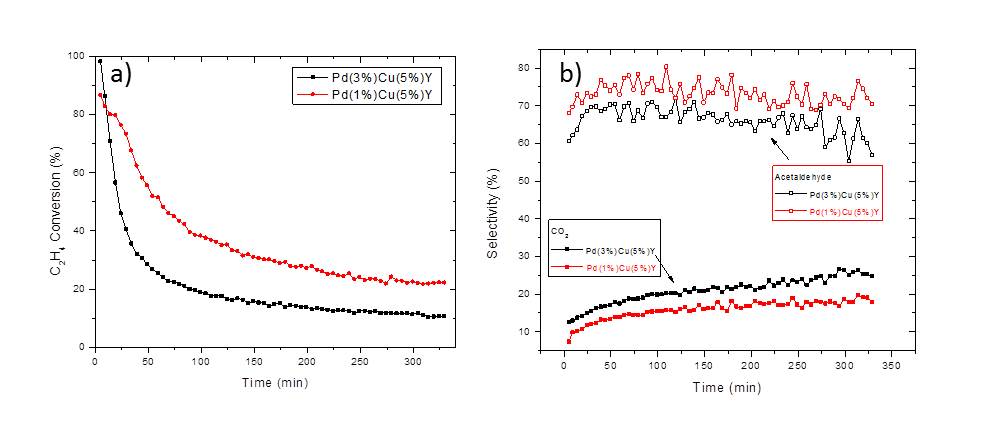Heterogenization of Pd/Cu catalysts for Wacker Oxidation
The Wacker process is one of the most efficient organic synthetic methods for manufacturing aldehydes and ketones. This liquid-phase homogeneous process, however, suffers from serious drawbacks such as the difficulty in the separation of the products from the catalyst solution; high corrosivity associated with the excess of HCl; and the formation of undesired chlorinated byproducts. Moreover, the production of these chlorinated compounds increases with the olefin’s chain length, and thus it is difficult to apply this process to the oxidation of higher alkenes [1].
Heterogenization of a chloride-free Wacker catalyst system on a support holds a great potential to overcome these problems. Cu-and-Pd-exchanged zeolite Y catalyst proves to be one of the most active and stable catalysts for heterogeneous Wacker oxidation reported in the literature but ultimately suffers from rapid loss of its high initial activity [2]. Evidence of catalyst particle sintering and deposition of carbonaceous products is shown after the reaction by ex situ TEM. To optimize the catalyst, the effects of varying metal loading; pretreatment and reaction conditions; and kind of support on the performance of the catalyst were investigated. Lower Pd loading and a higher Cu/Pd ratio resulted in a more active and selective catalyst for Wacker oxidation (Figure 1). Regeneration of the catalyst at different conditions was also explored in order to recover the initial activity completely or partially. Moreover, in situ XAS studies revealed the presence of Pd(II) and Cu(II) species in the fresh catalyst; and the formation of Pd(0) through the course of the Wacker process.

Figure 1. Ethylene conversion over Cu-Pd-exchanged zeolite Y catalyst with varying Pd loading and Cu/Pd ratio vs time on stream (a) and the corresponding selectivities for acetaldehyde and CO2 (b).
[1] J. Smidt, W. Haftner, R, Jira, R. Sieber, J. Sedlmeier, A. Sabel. Angewandte Chemie (International Ed. in English), 1962, 1, 80–88.
[2] P. Espeel, M. Tielen, P. Jacobs, Chemical Communications, 1991, 10, 669-671.